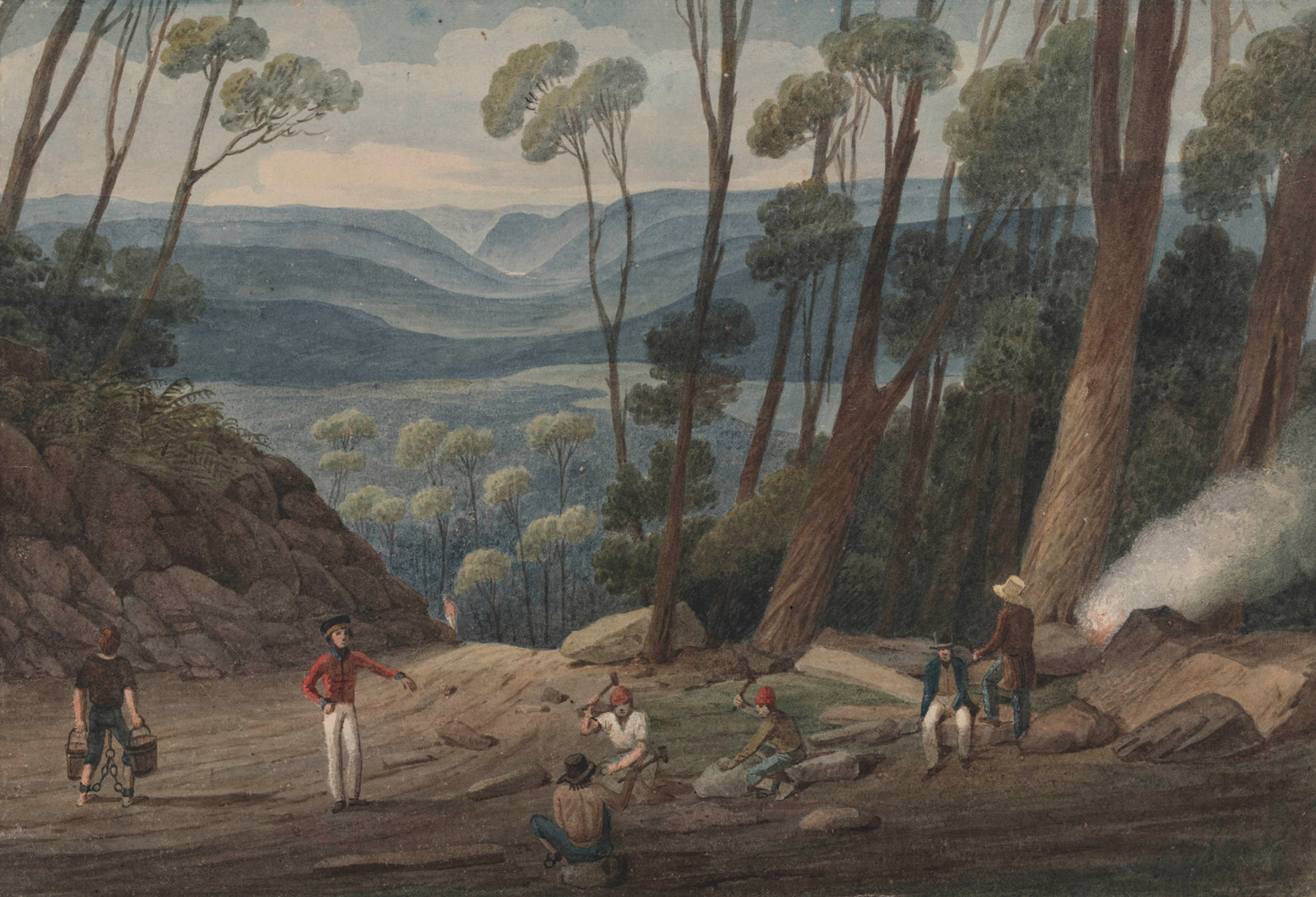Health of the workforce
Lucky to have survived the often treacherous transportation voyage, some convicts still arrived at Sydney Cove suffering infectious disease or other illness.
After the new General ‘Rum’ Hospital was opened in 1816 on Macquarie Street, these ill convicts were carried on carts and taken to the wards, which were sometimes overcrowded with patients suffering from scurvy, a disease caused by a vitamin C deficiency. But even those who arrived in good health sometimes later found themselves at the hospital.
Most city-born convicts were not used to the hard physical labour of clearing land, quarrying, farming and building roads through inhospitable landscapes. The rough trades the convicts did were sometimes hazardous and often resulted in accidents and injuries. Brickmaking created clouds of thick, choking smoke and dust. Pit-sawing timber beams from Australian hardwoods was extremely tough work, and the sawyers stood in hot, airless pits with sawdust sticking to their sweat. Such hazardous work frequently caused chronic and sometimes life-threatening illness.
Others came to the hospital with wounds inflicted from flogging, infectious diseases, malnutrition, accidents with flintlock guns, snake bites, burns, injuries caused by bullocks, cows and horses, and sometimes as victims of stabbings and assault, poisoning, gunshots, drunken accidents, domestic violence, or failed suicide attempts.

Convict Sydney
Back to business
From 1822, with the British government keen to cut costs and encourage pastoral expansion, part three sees the removal of convicts from town
Published on